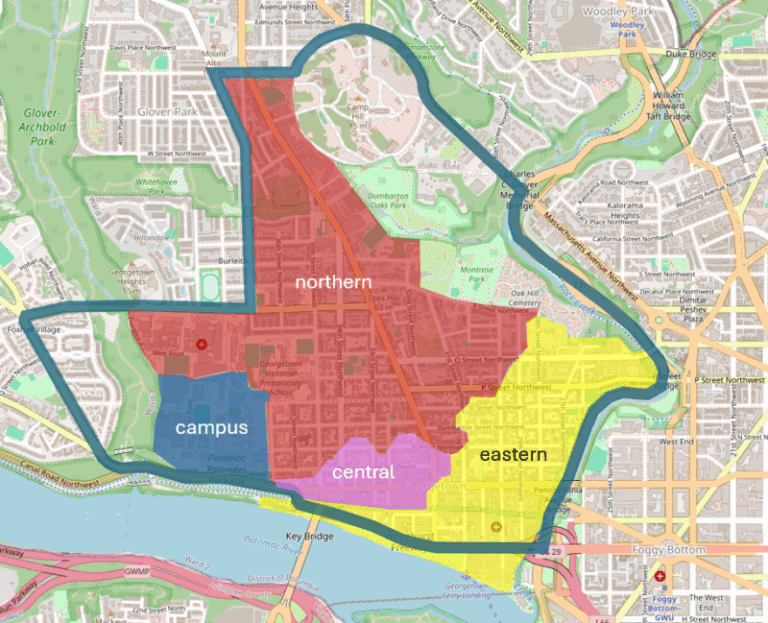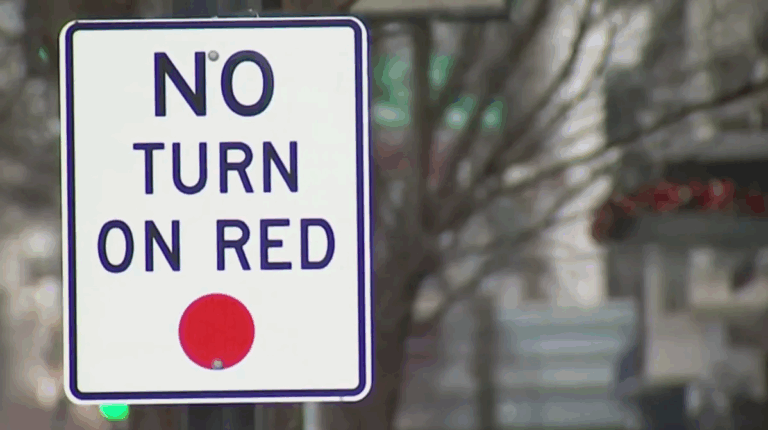Physical Address
304 North Cardinal St.
Dorchester Center, MA 02124
Physical Address
304 North Cardinal St.
Dorchester Center, MA 02124

In Greater Greater Washington, my dad and I have a new editorial explaining how a ring-and-access traffic circulation plan inspired by the Netherlands can keep necessary traffic moving while delivering neighborhood streets and iconic shopping streets from traffic. Read the…
One argument against Manhattan’s congestion pricing plan is that it merely redistributes congestion and pollution to nearby neighborhoods and suburbs, as drivers choose alternative routes that avoid midtown and downtown Manhattan. If this was true, air quality would decrease citywide…

On April 17, 1980, the Washington Post ran a curious paragraph, reporting a five-year-old quote for the first time – one withheld originally out of deference to the source: [Douglas Schneider’s] views of urban transportation were spelled out clearly in…
In New York City, one common argument against congestion pricing (or in fact, against any policy designed to further the interests of anyone outside an automobile) is that because outer borough residents are all car-dependent suburbanites, only Manhattanites would benefit. For example, film critic John Podhoretz tweeted: “Yeah, nothing easier that taking the subway from Soundview or Gravesend or Valley Stream.” Evidently, Podhoretz thinks these three areas are indistinguishable from the outer edges of suburbia: places where everyone drives everywhere. But let’s examine the facts. Soundview is a neighborhood in the Southeast Bronx, a little over 8 miles from my apartment in Midtown Manhattan near the northern edge of the congestion pricing zone. There are three 6 train subway stops in Soundview: Elder Avenue, Morrison Avenue, and St. Lawrence Avenue. Soundview zip codes include 10472 and 10473. In zip code 10472* only 25.7 percent of workers drove or carpooled to work according to 2023 census data; 59.6 percent use a bus or subway, and the rest use other modes (including walking, cycling, taxis and telecommuting). 10473, the southern half of Soundview, is a bit more car-oriented- but even there only 45 percent of workers drive alone or carpool. 41 percent of 10473 workers use public transit- still a pretty large minority by American standards, and more than any American city outside New York. In the two zip codes combined there are just 45,131 occupied housing units, and 24,094 (or 53 percent) don’t have a vehicle. In other words, not only do most Soundview residents not drive to work, most don’t even own a car. Gravesend, at the outer edge of Brooklyn over 12 miles from my apartment, is served by three subway stops on the F train alone: Avenue P, Avenue U and Avenue X. It is also served by […]

Autonomous vehicles will cause a congestion apocalypse on downtown streets unless we price their use of the roads.
The goal of congestion pricing is not to penalize car trips but to smooth demand over a more extended time to reduce congestion. Unfortunately, many new congestion pricing schemes seem designed to ban cars rather than manage demand for car trips. This article appeared originally in Caos Planejado and is reprinted here with the publisher’s permission. Congestion pricing aims to reduce demand for peak-hour car trips by charging vehicles entering the city center when roads are the most congested. Charging rent for the use of roads is consistent with a fundamental principle of economics: when the price of a good or service increases, demand for it decreases. Charging different rates depending on the congestion level spreads trip demand over a longer period than the traditional peak hour. The goal of congestion pricing is not to penalize car trips but to smooth demand over a more extended time to reduce congestion. Unfortunately, many new congestion pricing schemes seem designed to ban cars rather than manage demand for car trips. Congestion pricing then becomes more akin to the “sin taxes” imposed on the consumption of tobacco and alcohol than to traffic management. The traffic on urban roads in a downtown area is not uniform during the day but is subject to rush hour peaks, while late-night road networks are usually underused. The use of roads in the downtown area is similar to other places like hotels in resort towns. Hotels try to spread demand away from peak season by reducing prices when demand is low and increasing prices when demand is high. When resort hotels charge higher prices during weekends and vacations, it is not to discourage demand but to spread demand over a broader period. Well-conceived congestion pricing for urban roads works under the same principles as the pricing of hotels. […]
One argument against bus lanes, bicycle lanes, congestion pricing, elimination of minimum parking requirements, or indeed almost any transportation improvement that gets in the way of high-speed automobile traffic is that such changes to the status quo might make sense in the Upper West Side, but that outer borough residents need cars. This argument is based on the assumption that almost anyplace outside Manhattan or brownstone Brooklyn is roughly akin to a suburb where all but the poorest households own cars and drive them everywhere. If this was true, outer borough car ownership rates and car commuting rates would be roughly akin to the rest of the United States. But in fact, even at the outer edges of Queens and Brooklyn, a large minority of people don’t own cars, and a large majority of people do not use them regularly. For example, let’s take Forest Hills in central Queens, where I lived for my first two years in New York City. In Forest Hills, about 40 percent of households own no car. (By contrast, in Central Islip, the impoverished suburb Long Island where I teach, about 9 percent of households are car-free- a percentage similar to the national average). Moreover, most of the car owners in Forest Hills do not drive to work. According to the U.S. Census Bureau’s American Community Survey (ACS), only 28 percent of the neighborhood’s workers drive or carpool to work. Admittedly, Forest Hills is one of the more transit-oriented outer borough neighborhoods. What about the city’s so-called transit deserts, where workers rely solely on buses? One such neighborhood, a short ride from Forest Hills, is Kew Gardens Hills. In this middle-class, heavily Orthodox Jewish neighborhood, about 28 percent of households are car-free- not a majority, but again high by American or suburban standards. And even […]
Here’s something I hadn’t thought of in quite this way (but many others probably have): In a living city, space is cheap enough so that people with wacky (often “terrible”) new ideas can test them out, while wealthier people in that city search for wacky new things to try out (because they’ve experienced a lot of other things). In “creative” markets, such as for art, the demand side complements the supply side across income groups in an interesting way.
Viewing cities as spontaneous orders and not as works of art helps to explain the tradeoff between scale and order, as well as the role of time in softening the severity of that tradeoff. Complexity and creativity are at odds with scale and the comprehensiveness of design because increasing scale impinges on the action spaces where creative, informal contact tends to happen. Design might complement that informal contact to a point, but beyond a fairly low level it begins to overwhelm it. Again, small is not always beautiful, and big is sometimes unavoidable. That makes it all the more important to understand the impact of scale and design on spontaneous social orders. That applies as much to private as it does to public projects. When the designs are small relative to the surrounding social milieu, the downside of the tradeoff isn’t very steep. The problems start when budget constraints are soft and projects become mega-projects and mega-projects become giga-projects. I don’t want to sound too ideological – Jane Jacobs somehow avoided being ideologically pigeonholed all her life – but soft budget constraints are primarily the domain of governmental and, especially, of so-called public-private developments: Those elephantine-starchitectural-wonder-complexes that too-often strive for off-the-charts wow-factors. Without legal privileges, subsidies, and eminent domain, could the scale and degree of design of purely privately funded developments even begin to compare to those? I don’t think so. The rules of the game of urban processes interact in complex ways. So deliberately changing some of those rules to achieve a particular outcome is akin to trying to impose a particular design on the social order, killing the social order in the process, although perhaps preserving the appearance of life. Taxidermy again. (That, by the way, is why I have problems with landmarks preservation on the scale practiced […]
Before we can correct what we think is wrong with a city, we need an appropriate standard of what is right. That standard of rightness in turn depends on our understanding how the thing we are trying to fix is supposed to work. In this regard I’m afraid neither standard macroeconomics nor microeconomics is much help at all. In traditional macroeconomics, too much important detail is lost in its pre-occupation with aggregates and averages. For example, standard macroeconomic theory treats capital as homogeneous, and so makes no distinction between a hammer and a harbor, except that a harbor may be the equivalent of many, many hammers. Such an approach is too blunt an instrument for getting to the level of detail needed to appreciate the complex time-structure of capital of an economy, let alone to tell us what would be necessary to promote that structure (Lachmann 1978). Jacobs expressed antipathy toward macroeconomics. Macro-economics—large-scale economics—is the branch of learning entrusted with the theory and practice of understanding and fostering national and international economies. It is a shambles. Its undoing was the good fortune of having been believed in and acted upon in a big way (Jacobs 1984: 6-7) Earlier in this Chapter we saw that, unlike a living city, a nation-state is not a natural unit of economic analysis. In Jacobs’s words: Nations are political and military entities, and so are blocs of nations. But it doesn’t necessarily follow from this that they are also the basic, salient entities of economic life or that they are particularly useful for probing the mysteries of economic structure, the reasons for rise and decline of wealth. Indeed, the failure of national governments and blocs of nations to force economic life to do their bidding suggests some sort of essential irrelevance (Jacobs 1984: 31-32). The […]